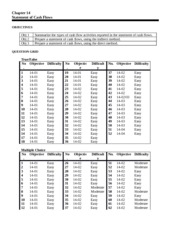
Wages and taxes aren’t your only payroll-related liabilities. Unless you handle payroll by hand, you have to pay for software or a PEO (professional employer organization). These are liabilities you incur and are responsible for paying. Naturally, one of your liabilities includes those wages themselves. Other fringe benefits that employees pay through their paychecks, such as commuting benefits, also count as payroll liabilities. Restaurant accounting systems should have a Tips Payable account to track employee tips collected but not yet paid.
Try our payroll software in a free, no-obligation 30-day trial. As with any type of liability, you must pay your payroll liabilities to the appropriate recipients. Instead of writing a full paycheck to an employee, you write two checks — one to the employee and one to the debt collector. Set up a Garnishment Payable account for the time between the end of the pay period and when you send out the garnishment check. Courts can require employers to withhold part of an employee’s paycheck to repay outstanding debt. As your business grows, you may offer benefit plans to motivate employees.
Employee paid time off
Calculate taxes and other deductions based on compensation. Taxes and other deductions are based on the forms your employees fill out. The forms will tell you how much of an employee’s wages you should deduct each pay period.

Next steps for streamlining your payroll process
Payroll liabilities remain on your books until you pay whoever is owed money, whether it’s employees, tax authorities, or insurance companies. Most of the time, payroll liabilities last just a few days fixed cost: what it is and how its used in business or weeks. Some payroll liabilities are reclassified into a payroll expense account when payments are sent to a third party. The cost incurred to retain an accountant or a payroll provider company is a business expense.
It is important for businesses to understand the concept of payroll liabilities. This will help them manage their finances and avoid any hiccups in running operations. Failing to manage your liabilities can lead to serious legal issues. These include penalties and fines from government agencies. These can be levied if you pay employees late or withhold the wrong amount from their paychecks.
Payroll taxes
At the end of each accounting period, businesses record a liability in an account called Wages Payable or Salaries Payable. The account reflects employee net pay — compensation after payroll taxes and other deductions — that your business owes but hasn’t yet paid. Payroll liabilities are all payroll-related expenses you haven’t paid yet.
- Now that you know what your potential payroll liabilities are, how can you ensure you’re paying them all as needed?
- The only difference is there’s more pressure to get the math right.
- Payroll expenses are the costs incurred due to day-to-day running a business.
- By contrast, some employers may have additional accounts to add, like a fitness credit or education reimbursement.
- QuickBooks, for instance, offers HR services, workers’ compensation insurance, and more by connecting business owners to partners.
These include fees to a payroll-service provider or the cost of any software you use to process payroll. Keeping up with payroll tax laws can be confusing and time-consuming. You can make tax withholding easier by understand payroll tax wage bases and limits using software like Hourly. It automatically processes payroll and pays your taxes and workers’ comp premiums. If you use software, you don’t have to worry about wage or tax calculations. And if you opt for full-service payroll, you won’t have to stress about depositing your payroll tax liability.
What is a payroll journal entry?
One method for recording payroll is to create journal entries to account for each piece of payroll, including employee paychecks and employer taxes. Taxes you pay as an employer depend on the type of business you run. For example, if you own a firm that hires employees to perform services, then you will have to pay federal unemployment tax. Also known as FUTA, this is a Federal income tax imposed on employers who hire domestic workers. Imagine you own a handyman services company with an employee named Alice.
However, it’s important business owners monitor their accounts around payday to make sure there’s enough money for payroll and any tax payments. Payroll liabilities, or payables , are amounts you currently owe, pertaining to your business’s payroll. If you’re using a payroll journal, you enter payables as credits because you are increasing the amount you owe. Examples of payroll liabilities include employee wages or compensation and payroll taxes.
For amortization in income statement example, if you hire a worker to paint your office building, then it is likely that they will start working right away. On the other hand, if you hire an assistant accountant, then chances are that they won’t be able to work for another few weeks. Manage, organize, and automate your books with Joist and QuickBooks Online—the perfect combination for an easy tax season. Plus, use Joist to accept client payments and create professional invoices in just a few clicks.
